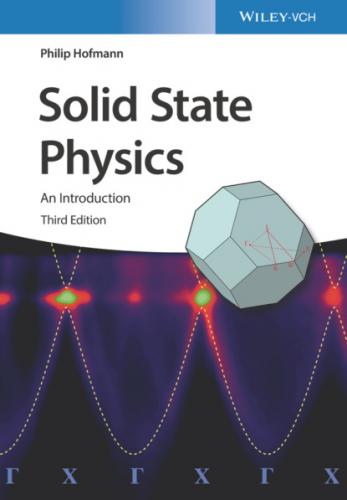1 eV =
1 K =
1 Crystal Structures
Our general objective in this book is to understand the macroscopic properties of solids on a microscopic level. In view of the many particles in solids, coming up with any microscopic description appears to be a daunting task. It is clearly impossible to solve the equations of motion (classical or quantum‐mechanical) of the particles. Fortunately, it turns out that solids are often crystalline, with the atoms arranged on a regular lattice, and this symmetry permits us to solve microscopic models despite the vast number of particles involved. In a way, this situation is similar to atomic physics where the key to a quantum‐mechanical description is the spherical symmetry of the atom. We will often imagine a macroscopic solid as one single crystal, a perfect lattice of atoms without any defects whatsoever. While it may seem that such perfect crystals are not particularly relevant for real materials, this is in fact not the case. Many solids are actually composed of small crystalline grains. Such solids are called polycrystalline, in contrast to a macroscopic single crystal, but the number of atoms within a perfect crystalline environment in them is still very large compared to the number of atoms on the grain boundary. For instance, for a grain size on the order of
There are, however, also solids that are not crystalline. These are called amorphous. The amorphous state is characterized by the absence of any long‐range order. There may exist, however, a degree of short‐range order between the atoms.
This chapter is divided into three parts. In the first part, we define some basic mathematical concepts needed to describe crystals. We keep things simple and mostly use two‐dimensional examples to illustrate the ideas. In the second part, we discuss common crystal structures. For the moment, we will not ask why the atoms bind together in the way they do – this topic will be discussed in Chapter 2. Finally, we delve into a more detailed discussion of X‐ray diffraction, the experimental technique that can be used to determine the microscopic structure of crystals. X‐ray diffraction is used not only in solid state physics but also for a wide range of problems in nanotechnology and structural biology.
1.1 General Description of Crystal Structures
Our description of crystals starts with the mathematical definition of the lattice. A lattice is a set of regularly spaced points with positions defined as multiples of generating vectors. In two dimensions, a lattice can be defined as all the points that can be reached by the vectors
(1.1)
where
(1.2)
Such a lattice of points is also called a Bravais lattice. The number of possible Bravais lattices with different symmetries is limited to 5 in two dimensions and to 14 in three dimensions. An example of a two‐dimensional Bravais lattice is given in Figure 1.1. The lengths of the vectors
Having defined the Bravais lattice, we move on to the definition of the primitive unit cell. By this we denote any volume of space that, when translated through all the vectors of the Bravais lattice, will fill space without overlap and without leaving any voids. The primitive unit cell of a lattice contains only one lattice point. It is also possible to define nonprimitive unit cells containing several lattice points. These fill space without leaving voids when translated through a subset of the Bravais lattice vectors. Possible choices of a unit cell for a two‐dimensional rectangular Bravais lattice are illustrated in Figure 1.2. It is evident from the figure that a nonprimitive unit cell has to be translated by a multiple of one (or two) lattice vectors to fill space without voids and overlap. A special choice of the primitive unit cell is the Wigner–Seitz cell, which is also shown in Figure 1.2. It is the region of space that is closer to one given lattice point than to any other.
The last definition we need in order to describe an actual crystal is that of a basis. The basis describes the items we “put” on the lattice points, that is, the building blocks for the real crystal. The basis can consist of one or several atoms, or even of complex molecules as in the case of protein crystals. Different cases are illustrated in Figure 1.3.
Figure 1.1 A two‐dimensional Bravais lattice.
Figure 1.2 Illustration of (primitive and nonprimitive) unit cells and of the Wigner–Seitz cell for a rectangular two‐dimensional lattice.
Figure 1.3 A two‐dimensional Bravais lattice with different choices for the basis.
